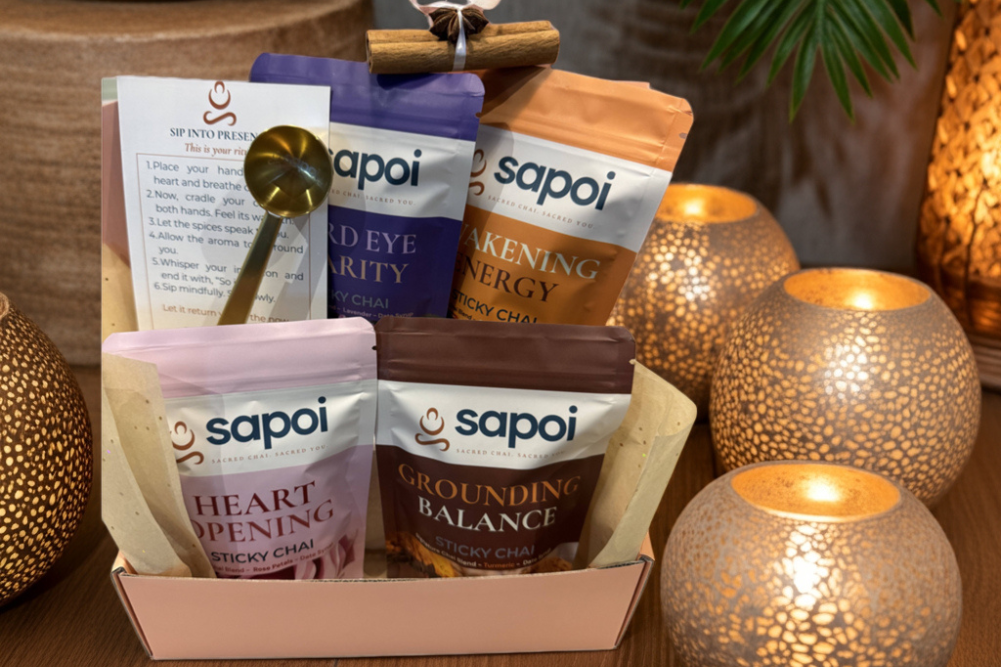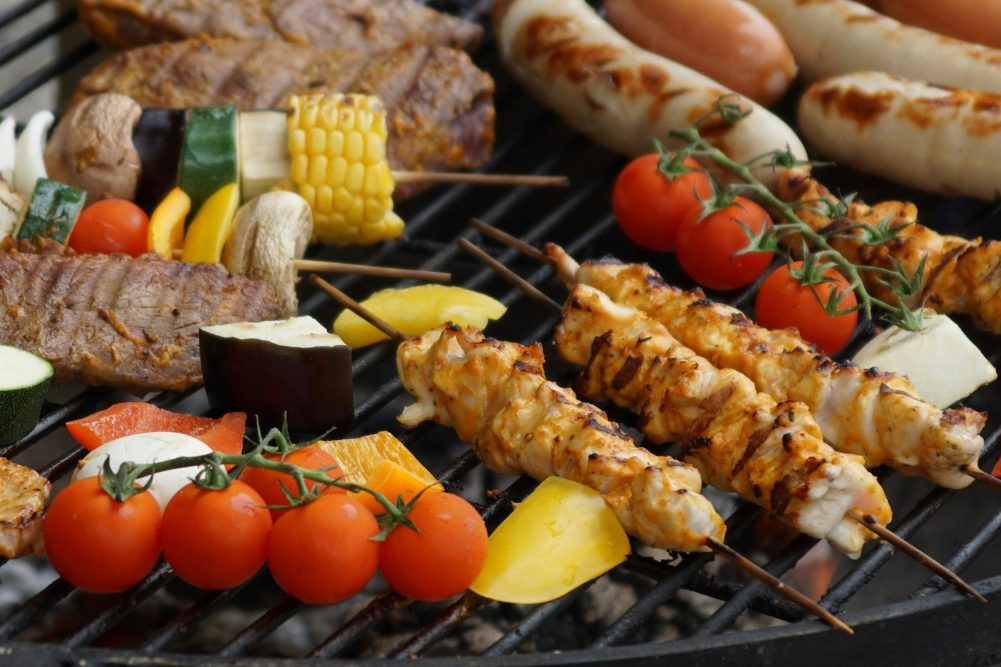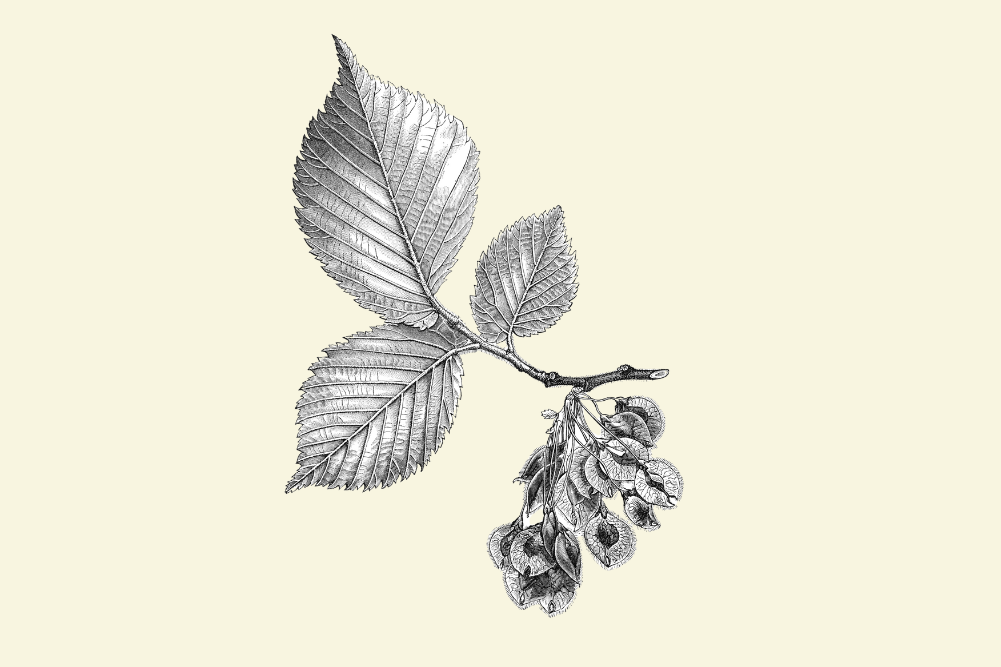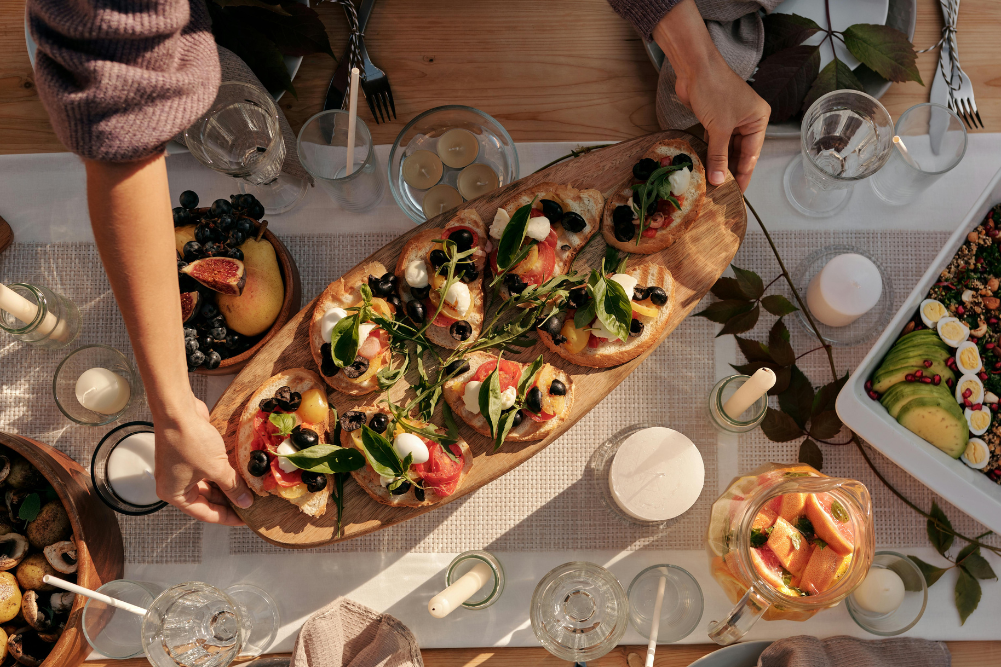Seven steps to reduce your cancer risk
It is estimated that one in three men and one in four women will be directly affected by cancer in their first 75 years of life and the World Health Organisation predicts that rates of cancer may increase by as much as 50 per cent by 2020. According to the Australian Cancer Council, one in three cancer deaths are preventable by adopting a “cancer-smart” lifestyle.
The World Health Organisation puts this figure at 40 per cent and in a 2005 press release the American Cancer Society stated that up to 60 per cent of cancers could be prevented through diet and lifestyle changes. So here are eight positive steps to cut your cancer risk.
STEP 1 Watch your waist
Your waist size can predict your cancer risk, according to the results of a 20-year study by Cancer Council Victoria released in 2007. A waist circumference greater than 100cm for men and 85cm for women was associated with a significantly increased risk of cancer.
Researchers at Harvard and the American National Institute of Health published results in April 2008 showing that women who carry excess fat around their waists are at an increased risk of early death from cancer compared to women with smaller waistlines.
Even normal weight women with high waist-to-hip ratios are at an increased risk. Excess fat around your waist significantly increases the risk of cancer of the colon and uterus and moderately increases the risk of cancers of the kidney, pancreas and breast (after menopause).
The fat that accumulates around your midsection, known as visceral fat, is very different from fat in other parts of your body. Visceral fat acts like an endocrine (hormonal) organ, secreting hormones and pumping out immune system chemicals directly into your blood stream. One of the hormones produced by visceral fat is oestrogen, which may help to explain the increased risk of both male and female hormonally related cancers such as prostate and breast.
Another effect of excess visceral fat is to reduce your sensitivity to insulin. The less sensitive you are to insulin, the more insulin your pancreas produces and the higher your insulin levels become.
High insulin levels may increase your risk of certain cancers including cancers of the colon, pancreas, prostate and breast. Insulin is also a powerful growth hormone and promotes cell growth and division. Cancer cells have up to 10 times more insulin receptors than normal healthy cells, making them more sensitive to the effects of insulin.
According to a 2007 study by Yale University’s School of Public Health, women with breast cancer and high insulin levels had a bleaker prognosis than their low-insulin counterparts.
Action plan:
- Exercise promotes the burning of visceral fat and reduces insulin levels. Exercise at a moderate intensity for at least 30 and up to 60 minutes per day. Strength or resistance training is probably more efficient at burning fat and keeping it off than cardio exercise alone. Cleaning the house and gardening count as physical activities and are usually a good mix of resistance and cardio.
- Eat sensibly and eat regularly to keep cravings for junk food at bay.
- The stress hormone cortisol also promotes visceral fat gain. Some good ways to reduce stress include yoga, meditation, prayer, flow-of-consciousness journaling, floatation tanks, regular massage, acupuncture or other body work, spending time with pets or in nature, a good night’s sleep, regular laughter and hugs.
- Normalise your insulin levels through diet. Cut out sugar and all refined white foods such as bread, pasta, crisps, chips and biscuits. Fruit juices, cordials and soft drinks should also be avoided.
- Nutrients such as chromium and herbal medicines gymnema, goat’s rue, cinnamon and fenugreek may all be used as part of a treatment plan to normalise insulin levels and reduce visceral fat.
- Ask your doctor to test your vitamin D levels. Your level of 25-hydroxyvitamin D (25OHD) should be at least 80nmol/L, although international research suggests that 125nmol/L is the most effective level for reduced cancer risk.
- Spend time outdoors in the sun, either early in the morning or late in the afternoon, wearing shorts and sleeveless top to expose as much skin as possible. Acclimatising your skin to sunlight during winter is also a good idea. Healthy sun exposure means avoiding sunburn; it’s not an excuse to sunbake on the beach.
- Always supplement with vitamin D in the form of cholecalciferol — not ergocalciferol, which can be toxic. Have your blood levels measured regularly to ensure the supplementation is effective and you don’t take excessive amounts of vitamin D.
- Include a member from the cruciferous family in your diet each day. Consider growing your own broccoli sprouts; there are broccoli sprouting kits available to help you do this.
- To increase fruit and vegetables in your diet, grate fresh apple into your cereal or porridge. Fresh or frozen berries are delicious in smoothies or sprinkled on your breakfast. Have a small side salad with lunch and dinner and make it appetising with foods like roast pumpkin, sweet potato, beetroot, haloumi cheese and capers along with the usual salad staples.
- Add a can of organic chopped tomatoes to your next soup or casserole for a lycopene boost.
- Add finely chopped or grated vegetables to your next bolognese sauce to ensure you’re getting a good dose of vegetables along with your lycopene.
- Avoid all alcohol if you have a strong family history of breast cancer.
- Don’t consume alcohol while on the pill or HRT.
- Replace your shampoo and conditioner, deodorant, skin-care and body-care products with non-toxic alternatives.
- Avoid plastic bottles that contain BPA for your baby and yourself. Never heat plastic bottles or food in plastic containers in the microwave. Similarly, avoid storing acid foods such as tomatoes or drinks in plastic containers. Better yet, choose glass or stainless-steel drink bottles.
- There are freezer- and heat-safe glass storage containers suitable for freezing and reheating food.
- Wash plastic drink bottles and containers by hand and not in the dishwasher.
- Don’t leave plastic water bottles in direct sunlight or in the car as heat increases the leaching of BPA from plastic.
- Reduce your reliance on tinned food. Most canned or tinned foods use plastic liners that contain BPA, so even tinned organic food may contain this cancer-promoting chemical.
- Avoid all processed vegetable oils including sunflower, safflower, canola and vegetable oil blends. Consume these fragile oils in the protective packaging that nature provided — as nuts and seeds.
- Use extra virgin olive oil liberally on salads and on food after cooking; it is a source of monounsaturated fats.
- If you must fry foods, it’s best to use stable saturated fats that will not be damaged by high temperatures. Safe oils for frying include ghee, lard, coconut and palm oil.
- When cooking with oils, if the oil heats to smoking point, throw it out and start again. Adding some stock or water to your wok while stir-frying will help stop your oil overheating.
- Avoid foods made from vegetable oils including margarine and vegetable oil spreads and foods fortified with vegetable oils such as milk.
STEP 2 Let the sunshine in
Have we taken the “slip, slop, slap” message too far? Sunlight in moderation is one of the basic elements of health, considered as important as good food, fresh air, clean water, a good night’s sleep and exercise. The key is moderation. Roasting yourself for several hours on the beach is not healthy sun exposure.
But without adequate sunlight exposure your body cannot make vitamin D, which is produced in your skin upon exposure to ultraviolet radiation in sunlight.
Vitamin D not only helps to prevent osteoporosis but also protects against prostate, breast and colon cancer. Canadian researchers have suggested that vitamin D supplementation may prevent up to 50 per cent of all breast cancers. American researchers are more conservative, with an estimated 25 per cent reduction in total breast cancers.
Even if you take the conservative estimate, it still means a quarter of all breast cancers are preventable with adequate vitamin D, achievable through healthy sun exposure.
Vitamin D deficiency in Australia and New Zealand is believed to be much higher than previously thought. Researchers conducting a study of fracture risk in the elderly found 90 per cent of women and 80 per cent of men in Sydney nursing homes were vitamin D deficient. A Children’s Nutrition Survey has found that around 30 per cent of children and adults are vitamin D deficient.
Similar levels exist in the general Australian population and if revised recommendations were adopted based on international research into vitamin D this figure climbs to 60 to 70 per cent.
Action plan:
STEP 3 Eat more broccoli and tomatoes
Eating more fruits and vegetables across the board can reduce your risk of cancer, but broccoli and tomatoes pack a particular punch. Cruciferous vegetables, such as broccoli, watercress, Brussels sprouts, cauliflower and cabbage, contain a potent group of chemicals, isothiocyanates, which may provide protection against breast, colon, and bladder cancer.Isothiocyanates cause cancer cells in the human body to self-destruct.
Broccoli sprouts contain the highest levels of isothiocyanates, 20 to 50 times more than mature broccoli. Watercress contains a powerful isothiocyanate that may protect against lung cancer in smokers. Highest levels are found in raw watercress, although some still remains after cooking. Another compound found in many cruciferous vegetables, indole-3-carbinol, helps your body detoxify and clear toxic forms of oestrogen associated with an increased cancer risk.
Lycopene, the red pigment found in tomatoes and other fruit, may help protect against prostate and other cancers. Lycopene, a relative of beta-carotene, is found in highest amounts in vine-ripened tomatoes and is even more concentrated in cooked tomatoes. Lycopene is fat-soluble so it needs some fat eaten with it in order to be absorbed.
Action plan
STEP 4 Watch your alcohol intake
Alcohol in moderation may be good for you but it can also increase your risk of breast cancer, the leading cause of cancer-related death in Australasian women. Heavy drinking also increases your risk of liver, mouth, oesophagus and bowel cancer.
Many researchers feel that there is no safe level when it comes to alcohol’s ability to increase breast cancer risk — as little as one unit per day, the equivalent of a small 125ml glass of wine, may increase your risk by seven to 11 per cent.
Alcohol increases the amount of oestrogen in your body and, when it comes to oestrogen and cancer, especially breast cancer, more is definitely not merrier: up to 70 per cent of all breast cancers are believed to be oestrogen driven. Oestrogen also increases the absorption of alcohol from the stomach and decreases your ability to break it down as quickly and effectively.
A pooled analysis of approximately 322,000 women showed that two to five drinks a day increased breast cancer by 41 per cent compared to non-drinkers and the risk was elevated by nine per cent for each additional drink.
Action plan
STEP 5 Choose beauty products carefully
A recent UK study found that women who use makeup on a daily basis absorb up to five pounds (2.27kg) of toxic chemicals every year and the average person exposes themselves to up to 175 different chemicals in the course of a day through the application of personal care products.
Putting toxic chemicals on your skin is worse for your health than eating them. When you eat something your liver acts as a filter, preventing many dangerous chemicals from accessing the rest of your body; but when you apply chemicals to your skin there is no filter — toxins are absorbed straight into your bloodstream and have instant access to your whole body.
One class of chemicals, parabens, has been found in breast cancer biopsies and is currently under investigation. Parabens are used as a preservative in the majority of skin-care products, including deodorants and many pharmaceutical medicines. Parabens mimic oestrogen in your body and increased oestrogen is not a good thing when it comes to cancer risk.
Scientists have known about this oestrogen-mimicking action of parabens since 1938 but it was believed that they were unable to penetrate the skin, an assumption now known to be incorrect. Parabens are also used as preservatives in many of the ingredients found in skin-care products and as such are not listed on the label. Unless a product is labelled as paraben-free you can assume it contains parabens. You’ll find parabens listed as methyl, ethyl, propyl and butyl paraben.
DEA (diethanolamine), MEA (monoethanolamine) and TEA (triethanolamine) are another group of hormone-disrupting chemicals known to form cancer-causing nitrates and nitrosamine. They are found in products that foam such as bubble bath, body wash, hand wash, shampoo, face cleansers and soaps. On labels they may be listed on the label under names like Cocamide DEA or MEA, or Laurimide.
According to Dr. Samuel Epstein, a professor of environmental health at the University of Illinois, repeated skin applications of DEA-based detergents increases the risk of liver and kidney cancer.
Action plan
STEP 6 Beware of plastic
The safety of plastic has been questioned once again with recent reports that chemicals found in some plastic products — including baby bottles — are linked with prostate and breast cancer. The chemical in question, bisphenol A or BPA, is found in many baby bottles, the plastic lining on tins of baby formula and nearly all tinned foods, water bottles and some dental sealants. BPA, like many other chemicals, acts like oestrogen in the human body and may contribute to the risk of hormonal cancers.
Action plan
STEP 7 Eat the right fat
For a variety of health reasons, current recommendations are to consume more polyunsaturated vegetable oils and reduce saturated fats found in animal products and tropical oils like coconut and palm oil.
Unfortunately, this does not hold true for cancer. The evidence that saturated fat increases your risk of cancer is weak at best; however, consumption of large amounts of polyunsaturated vegetable oils is associated with an increased risk of cancer.
Fats and oils are classed as either saturated or unsaturated depending upon the presence of or lack of double bonds in their chemical structure. Saturated fats contain no double bonds; monounsaturated oils like olive oil contain a single double bond and polyunsaturated fats contain more than one.
The problem with polyunsaturated oils is that the double bond is very unstable and prone to breaking. Once broken, free radical production begins. These free radical molecules damage cell membranes and genetic material inside your cells, increasing the risk of cell mutations and cancer developing. Heat, light and oxygen all contribute to the destruction of these double bonds; thus, polyunsaturated oils with their multiple double bonds are incredibly fragile and easily damaged.
The majority of polyunsaturated vegetable oils sitting on your supermarket shelf have been exposed to oxygen and high processing temperatures, are exposed to abundant light in their clear plastic bottles and are shipped around in non-refrigerated trucks, rendering the final product a veritable free radical farm.
In 1980, the Oncology Times published a paper from the University of California at Davis that showed mice fed polyunsaturated oils were more prone to develop melanoma. A commentary in the journal Carcinogenesis in 1999 concluded there is strong emerging evidence that dietary polyunsaturated fatty acids are risk factors for cancers of the breast and colorectum.
Processed meats such as hot dogs and deli meats such as salami are associated with an increased risk of certain cancers, especially of the digestive tract such as pancreas and bowel, but this is due to other factors, not saturated fat.
Action plan
Sarah Luck is a naturopath, herbalist and nutritionist specialising in the natural healthcare of pregnant women, breastfeeding mums, infants and children. She has a private practice in Sydney’s eastern suburbs.







